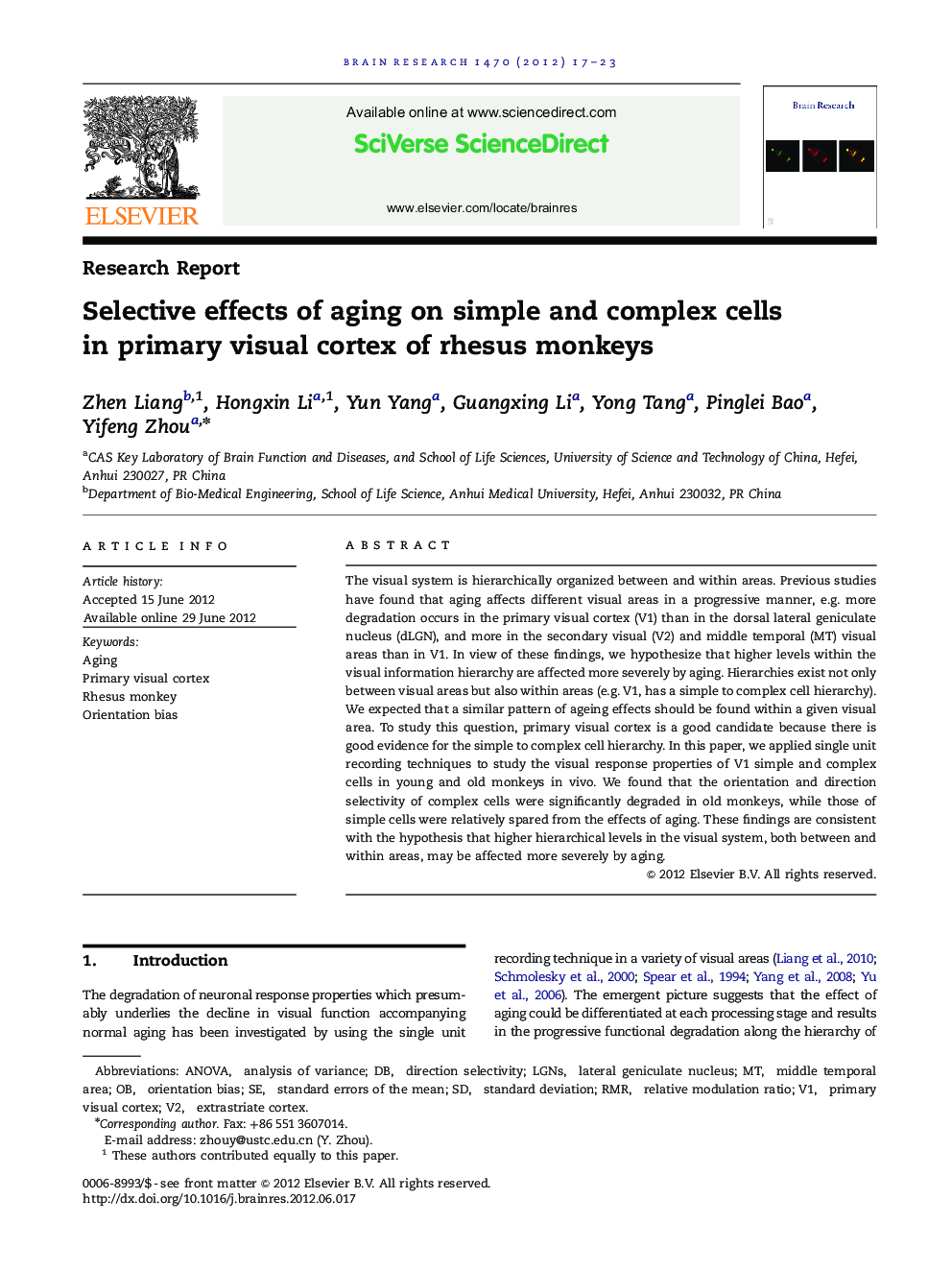| Article ID | Journal | Published Year | Pages | File Type |
|---|---|---|---|---|
| 6264226 | Brain Research | 2012 | 7 Pages |
The visual system is hierarchically organized between and within areas. Previous studies have found that aging affects different visual areas in a progressive manner, e.g. more degradation occurs in the primary visual cortex (V1) than in the dorsal lateral geniculate nucleus (dLGN), and more in the secondary visual (V2) and middle temporal (MT) visual areas than in V1. In view of these findings, we hypothesize that higher levels within the visual information hierarchy are affected more severely by aging. Hierarchies exist not only between visual areas but also within areas (e.g. V1, has a simple to complex cell hierarchy). We expected that a similar pattern of ageing effects should be found within a given visual area. To study this question, primary visual cortex is a good candidate because there is good evidence for the simple to complex cell hierarchy. In this paper, we applied single unit recording techniques to study the visual response properties of V1 simple and complex cells in young and old monkeys in vivo. We found that the orientation and direction selectivity of complex cells were significantly degraded in old monkeys, while those of simple cells were relatively spared from the effects of aging. These findings are consistent with the hypothesis that higher hierarchical levels in the visual system, both between and within areas, may be affected more severely by aging.
⺠We studied the effect of aging on OB and DB of simple and complex cells in senescent monkeys. ⺠The OB and DB of complex cells become worse with aging, while this is not for simple cells. ⺠We conclude that complex cells are more vulnerable to aging than simple cells. ⺠The different effect between simple and complex cell supports a hierarchical-aggravation hypothesis.
